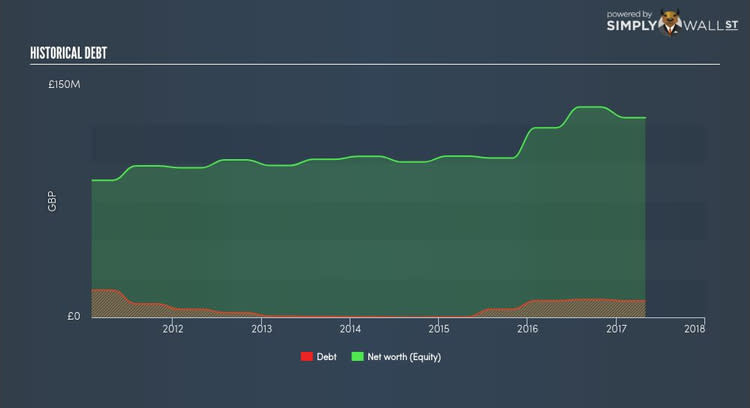What does Photo-Me International plc’s (LSE:PHTM) Balance Sheet Tell Us Abouts Its Future?

Photo-Me International plc (LSE:PHTM) is a small-cap stock with a market capitalization of GBP £657.50M. While investors primarily focus on the growth potential and competitive landscape of the small-cap companies, they end up ignoring a key aspect, which could be the biggest threat to its existence: its financial health. The significance of doing due diligence on a company’s financial strength stems from the fact that over 20,000 companies go bankrupt in every quarter in the US alone. These factors make a basic understanding of a company’s financial position of utmost importance for a potential investor. Here are a few basic checks that are good enough to have a broad overview of the company’s financial strength. Check out our latest analysis for Photo-Me International
How does PHTM’s operating cash flow stack up against its debt?
Unxpected adverse events, such as natural disasters and wars, can be a true test of a company’s capacity to meet its obligations. These catastrophes does not mean the company can stop servicing its debt obligations. We can test the impact of these adverse events by looking at whether cash from its current operations can pay back its current debt obligations. In the case of PHTM, operating cash flow over the past twelve months do cover its current debt, which indicates extremely low risk of PHTM not being able to meet its debt near-team, given that it generates enough cash in a year to pay off its current debt. This is great news for both debtholders and shareholders, as the company exhibits cautious cash and debt management.
Can PHTM pay its short-term liabilities?
In addition to debtholders, a company must be able to pay its bills and salaries to keep the business running. In times of adverse events, PHTM may need to liquidate its short-term assets to pay these immediate obligations. We should examine if the company’s cash and short-term investment levels match its current liabilities. Our analysis shows that PHTM does have enough liquid assets on hand to meet its upcoming liabilities, which lowers our concerns should adverse events arise.
Does PHTM face the risk of succumbing to its debt-load?
While ideally the debt-to equity ratio of a financially healthy company should be less than 40%, several factors such as industry life-cycle and economic conditions can result in a company raising a significant amount of debt. For PHTM, the debt-to-equity ratio is 8.26%, which means debt is low and does not pose any significant threat to the company’s operations. No matter how high the company’s debt, if it can easily cover the interest payments, it’s considered to be efficient with its use of excess leverage. A company generating earnings at least three times its interest payments is considered financially sound. PHTM’s profits amply covers interest at 258.95 times, which is seen as relatively safe. Debtors may be willing to loan the company more money, giving PHTM ample headroom to grow its debt facilities.
Next Steps:
Are you a shareholder? PHTM has demonstrated its ability to generate sufficient levels of cash flow, while its debt hovers at a safe level. Furthermore, the company exhibits an ability to meet its near term obligations should an adverse event occur. In the future, its financial position may be different. I recommend researching market expectations for PHTM’s future growth on our free analysis platform.
Are you a potential investor? PHTM’s relatively safe debt levels is even more impressive due to its ability to generate high cash flow, which illustrates operating efficiency. In addition, its high liquidity means the company should continue to operate smoothly in the case of adverse events. To gain more confidence in the stock, you need to also analyse the company’s track record. I encourage you to continue your research by taking a look at PHTM’s past performance analysis on our free platform to figure out PHTM’s financial health position.
To help readers see pass the short term volatility of the financial market, we aim to bring you a long-term focused research analysis purely driven by fundamental data. Note that our analysis does not factor in the latest price sensitive company announcements.
The author is an independent contributor and at the time of publication had no position in the stocks mentioned.

